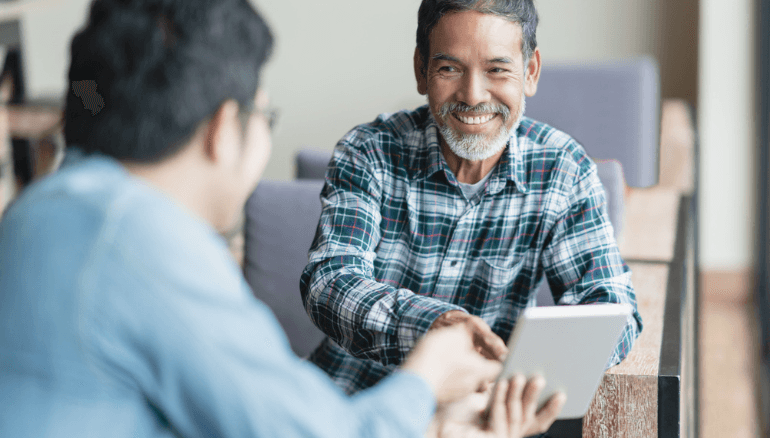The way we communicate has changed remarkably in recent years. With technology at our fingertips, we are now more connected than ever. However, the diversity of our social networks has been enhanced[1] while the diversity of opinions we encounter may not have[2]. Communication technologies now allow the rapid spread of miscommunication (a failure to communicate adequately) and misinformation (false or inaccurate information), with potentially disastrous consequences.
COVID-19 has shown us the cost of not providing the right information, at the right time, in the right way, such as when the virus spread through community housing in Melbourne early in the pandemic.
We’ve learned that, like the virus, misinformation is highly contagious and can have disastrous health consequences. The principles of good communication – clarity, simplicity and accessibility – are as relevant now as ever. While the pandemic exposed cracks in how we communicate with culturally and linguistically diverse (CALD) communities, it showed that appropriate, well-prepared messages can help people make informed decisions to protect their health and wellbeing.
How can organisations, whose job it is to work with CALD communities, improve communication to facilitate better health outcomes, particularly for men?
The multicultural landscape
Australia’s linguistic and cultural landscape is forever evolving. With over 250 languages spoken across our diverse community, communication with established and emerging cultural identities requires expertise beyond language. Accurate, timely and accessible communication is essential to ensuring everyone can participate in all aspects of life.
It’s difficult to find data about the health of men from multicultural backgrounds, and there’s little information to guide health professionals in engaging men from diverse backgrounds. The current National Men’s Health Strategy (2020-2030) identifies, “Males from culturally and linguistically diverse backgrounds including migrants, asylum seekers and their children,” as one of nine priority populations, but there’s not much known about how to communicate effectively with these men to help them achieve optimal health outcomes.
Translation is just the beginning
A major barrier for CALD men in accessing health care is low health literacy (the ability to find, understand and use health information effectively). Only 33% of people born overseas have adequate or better health literacy, compared to 43% of the Australian-born population. Only 27% of people who arrived in Australia in the past five years, and 26% of people whose first language is not English, have adequate or better health literacy.
It’s vital that we take the time to understand who we are trying to communicate with: this approach is not new.
Consulting our target audience before we embark on developing resources will ensure greater understanding and effectiveness of the material we produce. Information that is meaningful, respectful and effective will lead to better health outcomes for men.
Many organisations pride themselves on being inclusive, accessible, and diverse in the ways they work for and with ALL Australians. These range from disability to emergency services, through to legal, health, family violence and housing services. But if all they do is translate information into the top 10 languages spoken in Australia and park it on their website, burying it amongst all the other content, there is only a very small chance that men from diverse backgrounds will find it, let alone use it.
Where and how we provide information is just as important as the information itself
The way we get information has changed drastically in the last few years. We consume more audio-visual content and since we are subject to an overwhelming amount of information each day, many of us can only cope with short, targeted messages.
When we need to make a decision, we mostly want to know who, what, where, when and how. If this information is not readily available to multicultural communities, they may reach out to unreliable sources or information that may be inappropriate in an Australian context. For example, screening programs and preventative health practices may vary between countries, cultures, languages and systems, and may clash with those promoted in Australia.
The channels in which information is distributed play a pivotal role in how effective our message is.
For example, in the Arabic community, the younger demographic may prefer visuals posted on social media, whereas for the older demographic, the radio may resonate more. For Mandarin speakers, using platforms such as WeChat or Weibo makes sense, whereas, for Tagalog speakers, Facebook may be the way to go. And of course, let’s not underestimate personal connections with the community through their leaders.
Understanding what media types and platforms to distribute information through comes from consulting individual communities. If you get this part right, you’ve done the bulk of the work required to communicate effectively with CALD audiences.
The basics of doing better
How do we cut through the white noise and make the information more accessible? It’s about working with the people you are trying to reach, and finding out how you can make information useful for them.
There are no quick solutions, but ensuring your writing is clear, easy to understand and contains valuable information is the first step. Planning and allocating appropriate resources will also help ensure your translations are timely and current when they are produced.
And remember, the biggest mistake you can make is not to try at all.
References
[1] https://www.pewresearch.org/internet/2019/08/22/social-media-users-more-likely-to-interact-with-people-who-are-different-from-them/
[2] Cinelli et al., 2021. The echo chamber effect on social media. Proceedings of the National Academy of Sciences










